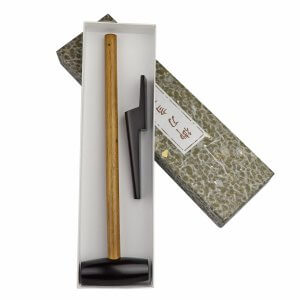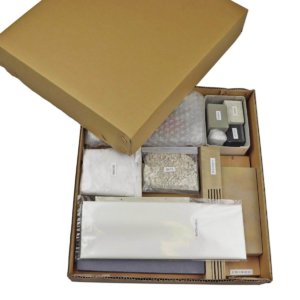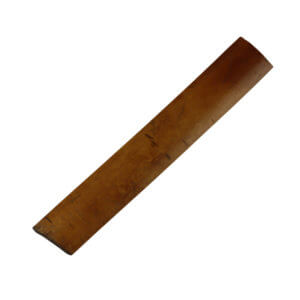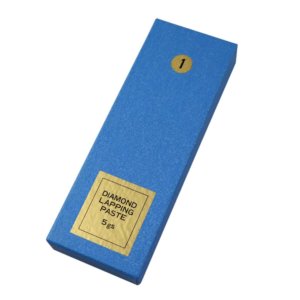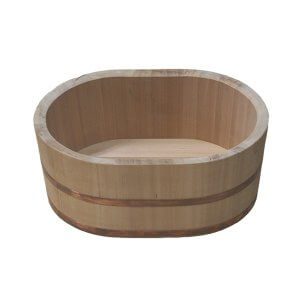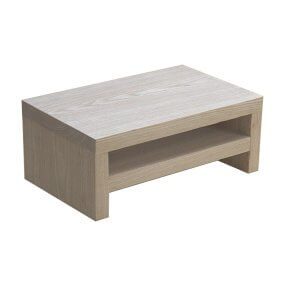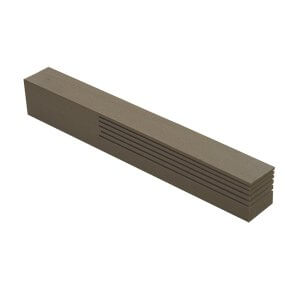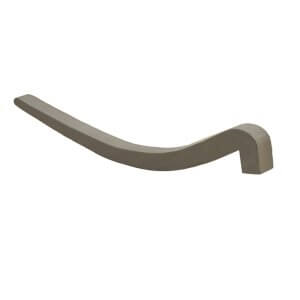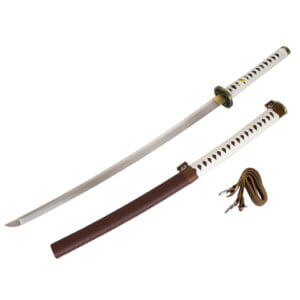Tools
In Japan, there are some special tools for working with katana and knives. At Samuraischwert.kaufen we offer you a selection of Japanese tools and accessories. Japanese tools are also popular with knife fans due to their high quality.
The items in this category are imports from our partners in Japan, which are traditionally located in the Japanese sword sector.
Showing all 10 resultsSorted by popularity
Showing all 10 resultsSorted by popularity
What tools are available for Japanese swords?
A number of highly specialised craftsmen are involved in the creation of the Katana as a work of art.
Forging tool
The blacksmith creates the blade and then works out the rough shape. As this requires a suitable furnace, which most people do not have, we do not offer any of the accessories used by Japanese swordsmiths in our online shop.
However, you will find coarse whetstones for shaping blades in our range
Polishing tool
The Togishi polisher ensures the final appearance. A distinction is made between a simple polish for swords used for cutting practice and a very time-consuming polish for swords that are only used as a display object.
During the elaborate polishing process, the details of the blade are worked out precisely, which creates a much higher quality look.
Different grinding stones and additional accessories are required for the individual steps of the polishing process.
Tool for metal fittings
The metal attachments on Japanese swords are divided into habaki (blade ferrule) and the other elements such as tsuba (thrusting blade) or fuchigashira (end caps on the handle).
The work on these elements is carried out by craftsmen. In Germany, goldsmith would be a comparable profession.
People who are skilled and active in this field usually have an extensive range of specialised tools at their disposal.
Tool for saya
The saya (sword sheath) is traditionally made from magnolia wood. This requires traditional woodworking tools such as planes and chisels.
The second step is to paint the scabbard. There are several variations in colours and techniques.
There is a traditional Japanese way of lacquering sword scabbards. A lacquer called Urushi is used for this.
Tool for the Katana handle
The basis for the handle is a piece of wood that is moulded into shape. There is already a distinction between a waisted and a standard shape.
The processing of the handle has it all with the individual details but also beyond that.
A seed (insert on the handle or wrapped around the handle) is used.
The grip tape must be wrapped precisely and accurately around the grip.
The metal elements must be attached.
All in all, a very time-consuming process. We therefore offer ready-made handles from Japan. Please feel free to contact us if you are interested.
Short extract from the history of the processing of Japanese swords
On many very old Japanese swords, the metalwork was still done by the swordsmith. In addition to the blade, he also made the habaki and tsuba.
Over the years, however, more and more professions developed around the manufacture of the Japanese sword.
There were already records of specialised sword polishers in the late Middle Ages.
The division of the individual work steps makes the Japanese sword the extraordinary work of art that it is. The fact that specialised craftsmen work on each element means that a level of quality is achieved that would otherwise be unthinkable.
Should I work on or repair my own katana myself?
Necessary and regular repairs
Modern (comparatively inexpensive) katanas that are used for cutting exercises, for example, require repairs at regular intervals.
There is typical damage, such as scratches on the blade, need for adjustment to the scabbard and the like.
As a rule, these are simple repairs that can be carried out without extensive manual skills.
On our YouTube channel we show you some simple repairs. In some cases, no special tools are required for these, as they can be carried out using everyday tools.
Sword repairs as a hobby
Many knife and sword fans work on their blades for fun as a hobby.
Typical hobby work on samurai swords would be sharpening and polishing the blade of a cheap sword or work on the handle, such as changing the grip strap or the fittings.
In some cases, impressive results can be achieved with relatively little effort. Working on the sword deepens your understanding of the topic as a whole and you learn a lot in the end.
Hobby work on katana is a must for real sword fans.
Visual customisation
In addition to the adjustments mentioned above, there are also adjustments that anyone can make without having to carry out any manual work.
Swap Sageo
Replacing the band (sageo) on the scabbard is comparatively quick and easy. There are numerous models and designs of this band, which have a significant influence on the overall look of the sword. You can find the corresponding accessories in our category Katana sword parts.
Swap grip tape and seed
The exchange requires dexterity, but the design of the grip tape and the inlay underneath have a great influence on the appearance of a sword. We only supply these accessories on request. Please feel free to contact us if you are interested.
Change Mekugi
With swords that are used regularly, it is unfortunately inevitable that the mekugi will have to be replaced from time to time.
Special bamboo wood is available for this purpose, from which mekugi can be customised.
Historical swords are for professionals
As always, work on valuable and historic swords should be left to the professionals.
If you own a sword of this type, please do not tinker with it yourself.
We can make contact for you if you are looking for experienced craftsmen in Europe or Japan for such work.

